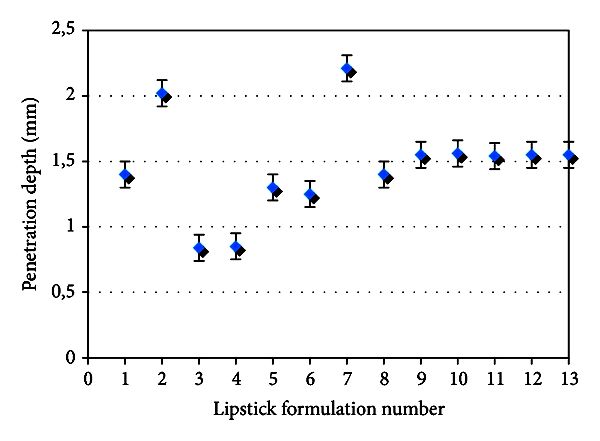Anyway, there are several insects that leave wax, however, many Apoidea [1], especially bees, produce wax more appreciated and utilized by man. The most famous wax, beeswax, is created by species Apis mellifera and Apis cerana, what are most bred by humans and, therefore, it offers simpler use of this bee product which has a wide spectrum of uses.
Beeswax is really a complex product secreted in liquid form by special wax glands within the abdomen of more youthful worker bees (aged between 12 and 18 days, in other words in the finish from the period where the bees behave as nurses) [2]. In touch with the environment, it solidifies in scales (the bees model with jaws to construct the honeycombs, adding pollen and propolis) [3] [4].
When secreted through the bee, the pure beeswax is nearly white-colored once connection with honey and pollen it assumes a variably intense yellow-colored color and turns brown after four years, since it provides the cocoon [5]. It resists the act of acids and gastric juices of honeybees and it is insoluble in water and cold alcohol it dissolves partly in boiling alcohol, and completely in chloroform, in carbon disulfide, as well as in the essence of hot turpentine [4] [6]. Once the wax is given boiling alcohol the part that melts is created by cerotic acidity, free or combined with small quantities of melissic acidity, while the one which doesn’t dissolve is created by ether-melisil palmitic combined with small quantities of ethers compounds of palmitic and stearic acidity. Its density at 15 °C is all about .960 kg/m3 to .970 kg/m3 also it melts at temperatures between 63.5 °C and 64.5 °C [3] [5] [6]. If exposed to some dry distillation it becomes a buttery mass that is known as wax oil [7].

1.1. Composition of beeswax
Beeswax is really a complex mixture (greater than 300 components) of hydrocarbons, free essential fatty acids, esters of essential fatty acids and fatty alcohol, diesters and exogenous substances [8] [9].
The beeswax composition is: hydrocarbons (12%–16%) having a predominant chain period of C27–C33, mainly heptacosane, nonacosane, hentriacontane, pentacosane and tricosane [10] free essential fatty acids (12%–14%), having a chain period of C24–C32 [11] free fatty alcohols (ca. 1%) of C28–C35 [5] straight line wax monoesters and hydroxymonoesters (35%–45%) with chain lengths generally of C40–C48, derived essentially from palmitic, 15-hydroxypalmitic and oleic acids [11] complex wax esters (15%–27%) that contains 15-hydroxypalmitic acidity or diols, which through their hydroxyl group, are associated with another fatty-acidity molecule [7] exogenous substances which are mainly residues of propolis, pollen, small bits of floral component factors and pollution [5]. The composition from the beeswax can vary between using one of the various families and various kinds of bees, since it is probable that wax production is carefully associated with bee genetics and diet [12].
1.2. Pharmaceutical and traditional utilization of beeswax
“Pharmaceutical” utilization of beeswax goes back to ancient Egypt: as stated by the Ebers Papyrus (1550 B.C.), beeswax was the primary component in lots of recipes for that preparation of ointments and creams accustomed to help pull plugs, to deal with burns and wounds and also to soothe joint discomfort. The “father of drugs”, Hippocrates, suggested using beeswax in situation of purulent tonsillitis. In the capital, many doctors of times accustomed to use a cream referred to as “cold cream”, which contained essential olive oil, beeswax and rose water to treat burns, wounds, cuts, bruises and fractures [2]. Beeswax was among the aspects of the very first cosmetic cream, that was produced by Galen, the truly amazing Greek physician, in 150 B.C., made up of beeswax and essential olive oil, with emulsion water (or rose water) [13]. Beeswax plays a huge role and in Ayurvedic medicine, the traditional and traditional Indian medicine, with the Madhuchishtha [14]. In Western countries, the quest for natural products for use along with drugs or, even, to exchange them caused “rediscovery” of Ayurvedic medicine.
The Madhuchishtha (beeswax) can be used for that proper care of wounds from abrasion or perhaps from burns with topical application [15] it’s been proven to become particularly good at treating heel cracking [16]. Some reports highlight using Madhuchishtha in conjunction with other natural products or mixtures, like Madhu (Honey) or Guda (Jaggery) or Taila (Oil) [17]. Today beeswax is broadly studied and employed for human medicine.
2. Antimicrobial activity of crude beeswax
During the past few years, the antimicrobial activity of natural products and particularly products from the hive is gaining importance and in contrast to other bee products, beeswax continues to be only lately studied. Crude beeswax demonstrated antibacterial activity against several microbial strains and from the Candidiasis (C. albicans) yeast [18]. The sample of beeswax was effective against both Gram-positive bacteria, particularly S. aureus ATCC25923 (S. aureus ATCC25923) (7 mm), Streptococcus epidermidis ATCC12228 (6.5 mm) and Streptococcus pyogenes ATCC19615 (6.5 mm), and against Gram-negative bacteria, particularly Bacillus subtilis ATCC27853 (B. subtilis ATCC27853) (7 mm), Pseudomonas aeruginosa ATCC27853 (4 mm), Escherichia coli ATCC25922 (E. coli ATCC25922), along with a particular inhibitory effect was discovered against C. albicans NCTC2708 (20 mm) no effect was discovered rather against Salmonella typhimurium ATCC14028 and Proteus mirabilis ATCC14153 [18].

Considerable interest was turned on by beeswax methanol and ethanol extracts [19]. Beeswax was extracted with four different solvents: methanol aqueous medium at concentrations of 99.9% and 70%, correspondingly denominated Meh and Mel ethanol aqueous medium at concentrations of 96% and 70%, correspondingly denominated Eh and El.
The outcomes, expressed in millimeters by calculating the zone of inhibition acquired in the aftereffect of the extracts around the tested microrganisms (Table 1) were very effective. As proven in Table 1, probably the most sensitive strains with WMeh were S. enterica CCM4420 and Candida tropicalis (C. tropicalis), while, for WMel probably the most sensitive strains were E. coli CCM3988, C. albicans, C. tropicalis and Aspergillus niger (A. niger). With Weh the strains having a greater zone of inhibition were A. niger, C. albicans and Candida glabrata (C. glabrata), with WEl these were discovered to be Listeria monocytogenes CCM4699, E. coli CCM3988 and C. glabrata [19].
Resourse: http://sciencedirect.com/science/article/pii/
3D printing & medical applications: Carsten Engel at TEDxLiege
COMMENTS:
Patrick Marckesano: Well…
Shauday Smith: actually…
Li Ping: How far? We would go as much as we can. I think few ethical problems are specific to this technology.
john pl.: +Li Ping like ?
vishal desle: simply superb…!
Горан Нешић: amazing stuff. 3D printer is becoming an ultimate creation machine.
Jim Bannon: To get your message out learn how to #EngageDirectMeasure with #Call2ACTIONSymbols. Add #Push2GO capability to all your PRINTED Materials. \n\nhttp://BudgetVideo4.BIZ
chitanya krishna: simply excellent explaining about technology
Kassandra Daniels: Please speed up this technology! My Grandpa needs this
Joseph Stokes: Uhmm? A rather weak presentation for TED.
Aelita Stones: I love it!
Anand Govindaraj: not TED worthy
NoZain: +Anand Govindaraj Why do you think so?
Aelita Stones: lol….are you a god or something?